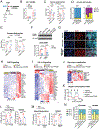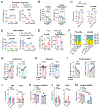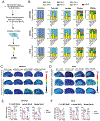Restoring hippocampal glucose metabolism rescues cognition across Alzheimer's disease pathologies
- PMID: 39172838
- PMCID: PMC12313320
- DOI: 10.1126/science.abm6131
Restoring hippocampal glucose metabolism rescues cognition across Alzheimer's disease pathologies
Abstract
Impaired cerebral glucose metabolism is a pathologic feature of Alzheimer's disease (AD), with recent proteomic studies highlighting disrupted glial metabolism in AD. We report that inhibition of indoleamine-2,3-dioxygenase 1 (IDO1), which metabolizes tryptophan to kynurenine (KYN), rescues hippocampal memory function in mouse preclinical models of AD by restoring astrocyte metabolism. Activation of astrocytic IDO1 by amyloid β and tau oligomers increases KYN and suppresses glycolysis in an aryl hydrocarbon receptor-dependent manner. In amyloid and tau models, IDO1 inhibition improves hippocampal glucose metabolism and rescues hippocampal long-term potentiation in a monocarboxylate transporter-dependent manner. In astrocytic and neuronal cocultures from AD subjects, IDO1 inhibition improved astrocytic production of lactate and uptake by neurons. Thus, IDO1 inhibitors presently developed for cancer might be repurposed for treatment of AD.
Figures








Update of
-
Restoring hippocampal glucose metabolism rescues cognition across Alzheimer's disease pathologies.bioRxiv [Preprint]. 2024 Jun 28:2024.06.23.598940. doi: 10.1101/2024.06.23.598940. bioRxiv. 2024. Update in: Science. 2024 Aug 23;385(6711):eabm6131. doi: 10.1126/science.abm6131. PMID: 38979192 Free PMC article. Updated. Preprint.
Comment in
-
Alzheimer's and metabolism wed with IDO1.Science. 2024 Aug 23;385(6711):826-827. doi: 10.1126/science.adr5836. Epub 2024 Aug 22. Science. 2024. PMID: 39172856 Free PMC article.
-
Targeting the kynurenine pathway.Nat Rev Drug Discov. 2024 Nov;23(11):816. doi: 10.1038/d41573-024-00160-x. Nat Rev Drug Discov. 2024. PMID: 39333710 No abstract available.
References
-
- Hebert LE, Scherr PA, Bienias JL, Bennett DA, Evans DA, Alzheimer disease in the US population: prevalence estimates using the 2000 census. Arch Neurol 60, 1119–1122 (2003). - PubMed
-
- Dewanjee S et al. , Altered glucose metabolism in Alzheimer's disease: Role of mitochondrial dysfunction and oxidative stress. Free Radical Biology and Medicine 193, 134–157 (2022). - PubMed
MeSH terms
Substances
Grants and funding
LinkOut - more resources
Full Text Sources
Medical
Molecular Biology Databases
Research Materials

